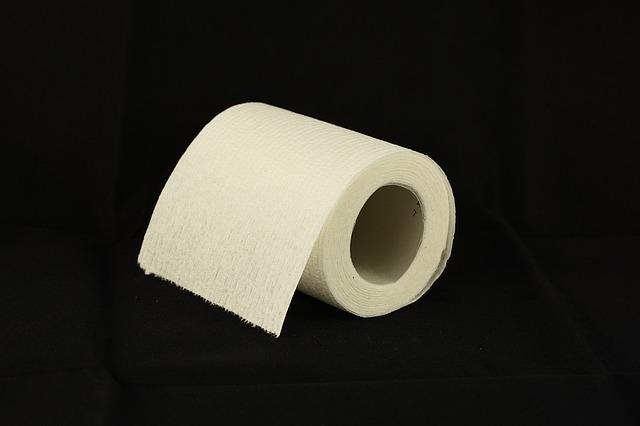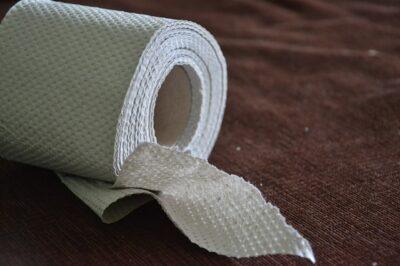When it comes to stockpiling hygiene products, toilet paper is often near the top of the list.
While there are simpler and cheaper alternatives we could all learn to use in the event of an emergency, many people would probably have a hard time doing without this creature comfort. Toilet paper would quickly disappear from the shelves in the event of an economic crisis or other type of disaster, so securing several months’ or even a year’s supply is not a bad idea.
How to Get Started
Toilet paper is prone to moisture and all kinds of critters: vermin, silverfish, termites, ants (if you live in the humid tropics like I do), and of course, rodents. Mice, squirrel and chipmunks love to gnaw at all kinds of paper, shredding them to bits to use for nesting.
‘Miracle Oil Maker’ Lets You Make Fresh Nut Oils Within Minutes!
Large bundles of TP can be a fire hazard. And, like most things, toilet paper breaks down faster when exposed to the sun’s ultraviolet rays. So, how and where do you stash them so they last a good number of months or years?
Here’s a few tips:
1. Store in airtight, waterproof containers. There’s a variety of receptacles you can use, depending on the quantity of your supply and the environment in which you place them. If you live in an area where rodents aren’t a problem, then you can use regular plastic bins and buckets. Keep the TP in the packaging you bought them in, and line your storage bin with a heavy-duty garbage bag to protect from humidity and dampness. Throw in a packet or two of dessicant (such as silica gel), cover, and then seal the lid with duct tape. There are large pails or barrels with rubber O-ring lids that would work wonderfully for this purpose.
If you prefer larger, heftier containers, go for 55-gallon steel drums with lever-lock lids. There are cheap recycled ones that you can likely find on eBay. Most of them are food-grade, having been used to ship large quantities of fruit juice concentrate, cooking oil and other food products. Large PVC pipes, the kind used for sewage purposes, also can be used. Just make sure you secure the ends with screw caps.
Story continues below video
If space is a priority, vacuum-seal storage bags (also called Space Bags by Ziploc or Magic Bag by Dollar General) would work great. They usually come in large sizes big enough in which to store bed spreads. To further cut down on space, you can compress the rolls by taking the cardboard core out of them, then squish and smash until they’re all flat.
2. Stack your containers in a place that’s dry but not hot, while also being safe from flooding and roof or plumbing leaks. This could be your garage, basement, attic or crawl space. You also could bury them in the ground. The cold earth will act as a refrigerator, with a low oxygen level that would also help in preservation.
3. To ward off bugs, place insect repellents in and around your storage containers. This could be moth balls or fabric softener sheets — critters hate the smell. Just make sure to pack and seal the TP in freezer bags first to avoid contamination. Better yet, use natural deterrents like food-grade diatomaceous earth. Or, try dried herbs and spices (bay leaves, cinnamon), wood chips (pine or cedar), flowers (lavender) or cotton balls dipped in peppermint oil. Put a teaspoonful or two in mesh sachets (the toe end of an old pantyhose would do) and place them in the corners of your bins; scatter some more outside and around them.
Check periodically and rotate your supply.
Alternatives to Toilet Paper
What should you do if your stock eventually is depleted? You’ve got several alternatives. Be like the ancient Romans, who used a stick and a sponge at the end, dipped in vinegar for disinfection. Or the French, who go “no hands” and use a bidet, bum gun or toilet spray. (You may improvise just by using a regular spray bottle.) In Asia and many parts of the world, old-fashioned folk still wash with soap and water – and yes, using just their bare hands!
This Cool-To-The-Touch Lantern Provides 100,000 Hours Of Emergency Backup Lighting
Not for you? You could tear pages off an old phonebook, Sears-type catalog, or use any kind of paper — rubbed together for softness and texture.
But the simplest, cheapest and most sustainable option would be just an old washcloth. Actually, any soft natural fabric would do — like cotton or flannel. Find an old T-shirt and cut in hand sized pieces; even old cotton socks should be fine. Stack them in a pile on the toilet tank, while keeping a small bucket half-filled with water and bleach or vinegar on the floor beside the potty. After doing your business, moisten a cloth with plain or soapy water to clean yourself. Then just dump the rag(s) straight into the bucket. When it’s time to wash, take a plunger and plunge a few times to rinse. (You could, of course, do this with a gloved hand, too.) Pour or wring out the excess water and dump the rags into the washing machine.
Finally, if you find yourself in a worst-case scenario with no water at all, be a survivalist and look to nature — leaves, grass and moss. After all, humans have lived for thousands of years without TP. It wasn’t until two centuries ago that commercial wipes came to be. So, there’s probably no reason why we can’t learn to do without it for another few years or so.
What advice would you add? Share your tips in the section below:
Tired Of Losing Freedoms — And Looking For Another Country? Read More Here.
 Off The Grid News Better Ideas For Off The Grid Living
Off The Grid News Better Ideas For Off The Grid Living





